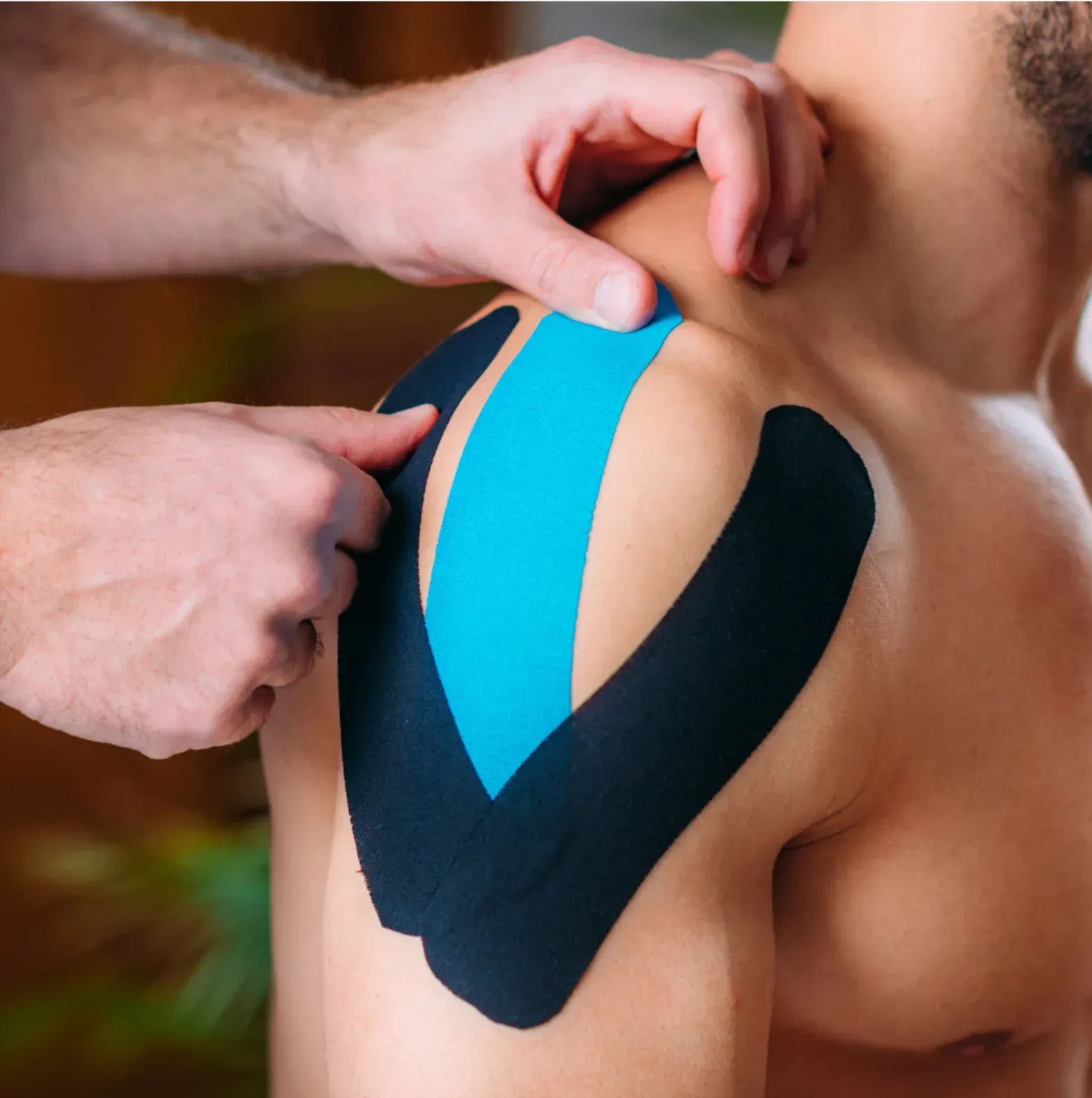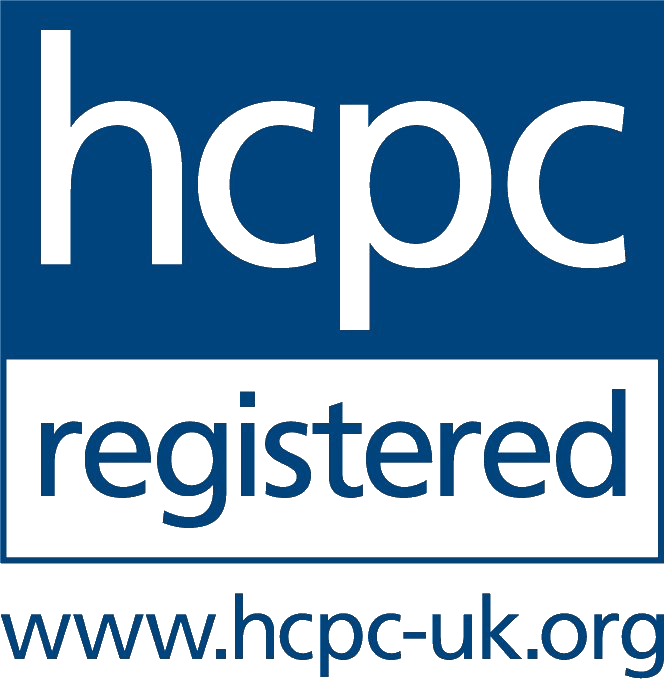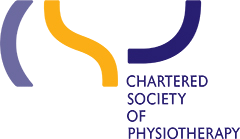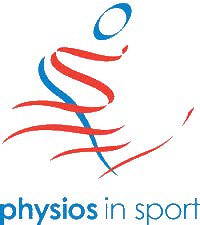Blog

Source: Lyman, K.J., Gange, K.N., Hanson, T.A. and Mellinger, C.D., 2017. Effects of 3 different elastic therapeutic taping methods on the subacromial joint space. Journal of manipulative and physiological therapeutics , 40 (7), pp.494-500 Kinesiology tape (K-Tape) is a form of therapeutic elastic tape which has been commonly used by various healthcare professions. The developers hypothesise that the tape has similar thickness and elasticity similar to human skin can be used to help offload, stabilise and increase or inhibit muscle contraction based on the way it is applied. However, results of clinical trials have often been either inconclusive or conflicting, highlighting the need for further research. Shoulder Impingement Syndrome is a common shoulder condition which is theorised to be a narrowing of the subacromial space ultimately affecting the subacromial bursa, supraspinatus tendon or both. However, research is now highlighting that such mechanisms may not be present and the term ' subacromial pain syndrome' is now used more widely. K-Tape has often been used to help treat people which such shoulder complaints, and previous studies has looked an patient reported outcomes such as pain and disability - however very studies look to examine the physiological change at the shoulder change following the application of tape. A study by Lyman et al (2017) looked to 'evaluate the underlying physiological effects of the elastic therapeutic taping methods on the subacromial joint space in healthy individuals by using musculoskeletal diagnostic ultrasound' Study Design 48 people were recruited for this study, 24 males and 24 females, with ages ranging from 18-59 years with NO history of shoulder pain in their dominant arm. An ultrasound machine was used on each participant to establish their baseline acromialhumeral distance. The shoulder was then taped in 1 or 3 ways: 1) Taping of supraspinatus from origin to insertion 2) Taping of anterior and posterior deltoid from origin to insertion 3) A combination of both Following the application of the tape, the participant was instructed to rest for 5 minutes before the acromihumeral distance was measured to note any difference. Outcome These more granular results demonstrate that taping of the anterior and posterior deltoids has a statistically significant effect. In contrast, neither taping of the supraspinatus alone nor taping with both techniques increased the measured distance at a statistically significant level. In every case, the measured space increased after taping. The measured effect was larger in women than in men. My View This study highlights that taping the deltoid muscle can improve the subacromial space when examined under ultrasound and could be a useful form of adjunctive treatment when helping people with shoulder pain and alongside a comprehensive rehabilitation programme. However, this study was performed in healthy subjects and further research translating this research to those with shoulder pain to examine whether there are similar outcomes and whether pain and disability improves as a result

Source: Akshay Date & Luthfur Rahman (2020) Frozen Shoulder: Overview of Clinical Presentation and Review of the Current Evidence Base for Management Strategies, Future Science OA, 6:10, FSO647, DOI: 10.2144/fsoa-2020-0145 Frozen shoulder is a common condition which occurs in approximately 2-5% of the population with a peak incidence between 40-70 years of age. It is characterised by varying levels of pain and limitation in range which is more common in women and can occur in both shoulders in roughly 20-30% of cases. While frozen shoulders are normally self limiting, symptoms can continue for a number of years with varying levels of pain and functional limitation and in some instances may never fully resolve. There are 2 reasons why people can go on to develop frozen shoulder: · Primary : The most common presentation where pain and limitation are noted however without an underlying cause · Secondary : Frozen shoulder can occur following trauma, shoulder surgery, prolonged immobilisation, diabetes, thyroid disease or other autoimmune disorders Pathophysiology and presentation The reason as to why people develop primary frozen shoulder is still not full understood, however research has shown that the joint capsule that surround the shoulder becomes thickened and tight with evidence of inflammatory cell within the capsule with some suggestion of an autoimmune cause for primary shoulder pain. It is proposed that there are 4 stages of frozen shoulder that is demonstrated in the table below. Ther onset of symptoms however can be gradual over a period of months with symptoms being poorly locaused and reported as a deep ache, with night pain being an common feature. On examination people usually demonstrate good rotator cuff strength and no specific tenderness on palpation however a marked loss of range of movement, partiucuarly into rotation. As frozen shoulder affects the joint capsule, any form imaging such as an x-ray is normal but can helpful to rull out any other types of pathology.

Lower back pain is incredibly common, and is the leading cause of disability globally. While painful, symptoms are seldom anything to be concerned about and in fact the prognosis for recovery is good - typically 8-12 weeks. For some, people with lower back pain report symptoms that can be felt into the leg. More often than not, people who experience such symptoms have either been told or report that they have 'sciatica'. However, over the years sciatica has been used as an umbrella terminology to describe ANY pain felt in the leg when actually there are several reasons this may occur, two of these causes are: Neuropathic Pain: Defined as 'pain caused by a lesion or a disease of the somatosensory nervous system'. In other words, back pain associated with a disc herniation, which causes compression of the nerve leading to symptoms down into the leg Nociceptive Pain: Defined as ' pain that arises from actual or threatened damage to non-neural tissue and is due to the activation of nociceptors. Nociceptors are triggered by mechanical, chemical, or thermal stimuli arising from all innervated structures’. In other words, pain that arises from another structure around the lower back but not associated with nerves. It's important to attempt to identify whether the pain is associated with the nerve of another structure as ultimately the treatment moving forward will vary. So, are there different symptoms that people experience that could help differentiate between neuropathic (nerve) and noiceiptive (other structure) pain? Fourre et al have identified common signs and symptoms which can help (see below)

Chronic lower back pain (CLBP), which is classed as persistent pain that continues for greater than 3 months, is prevalent in 3–4% of adults below 45 years of age and 5–7% of adults over 45 years of age. While a large majority of lower back pain It can have a significant impact on quality of life, function and ability to participate in work and activities, leading to numerous investigations and various referrals to other healthcare professionals. These two studies attempted to examine movement patterns in people with and without lower back pain, as well as how changing thought patterns around their beliefs can help their pain and function. Exploring lumbar and lower limb kinematics and kinetics for evidence that lifting techniqueis associated with LBP (Saraceni et al 2021) People with chronic lower back pain usually report difficulty in bending forward, in particular when attempting to lift anything heavy. This study attempted to review biomechanical movement pattern differences in manual labourers with and without chronic lower back pain (>5 years). What they identified was that those with lower back pain used a different lifting technique when compared to those without lower back pain. Those with back pain performed more of a slower, 'squat' type lift, with a greater knee bend and straighter lumbar and thoracic spine as well as greater peak knee forces when standing. Those without lower back pain performed the lifting task with a quicker, more stooped like posture with less knee bend. Their conclusion was that the common assumptions around lower back pain associated with movements and the forces produced during a lifting task were not observed and brings into question the current belief around safe lifting. From protection to non-protection: A mixed methods study investigating movement, posture and recovery from disabling low back pain (Wernli et al, 2021) This mixed method study design examined the benefit of Cognitive Functional Therapy (CFT) in people with chronic lower back pain (CLBP). 12 people were interview at the start of the study, identifying their beliefs about their back and the 3 movements and postures that they find most provoking. A course of CFT was delivered over a period of 12 weeks, where participants were interviewed afterwards to review their movements and their perceptions of their symptoms. At the end of the 12 weeks, 11/12 people had reported significant improvements in their pain and function, enabling them to return to their usual activities and in some instances (7/12 people) not think about their back pain at all. The authors of this study identified two groups for both before and after the intervention which I believe is extremely useful: Before Intervention Non-Conscious Protection - A lived experience of being stiff, restricted, tense, locked or seized up Conscious Protection - Tense, guarded, careful and cautious movements and postures due to belief of structural damage / vulnerability, fear and worry of damage, pain, future +/- diagnostic uncertainty After Intervention Conscious Non-Protection - Purposefully relaxed, fluid, free movements and postures that reduce pain and increase function (including integration into valued activities) Non-Conscious Non-Protection - Automatic, natural, relaxed, fluid, free movements and postures secondary to positive experiences that disconfirm or violate previous beliefs, worries or expectations, and individualised education about their condition and the meaning of pain Cognitive Functional Therapy (CFT) is the mastermind of australian Physiotherapist Peter O'Sullivan, and now has numerous research papers highlighting the benefit of this intervention in people with Chronic Lower Back Pain. I had the honour of participating in one of his courses last year and have successfully used this intervention in a number of clients. So, if you are experiencing long term lower back pain, speak with me today on either enquiries@mattrossphysiotherapy.co.uk or 07814 717577 to see how I can help. I look forward to hearing from you! Matt Ross

Recently. the UK Government announced changes to their guidance and laws on how to manage the COVID-19 Pandemic. According to the recently published 'Living with COVID-19', regular asymptomatic testing and required self isolation should you test positive has been removed. However, the UK government still recommend: Wearing a face covering in crowded and enclosed spaces Testing if you do develop symptoms (the NHS still suggest that a temperature, loss of sense of taste or smell and a new continuous cough are the most common signs) Stay at home if you are unwell Regular hand washing The current recommendations the Public Health England Infection Protection and Control Teams is that PPE shall continue within a healthcare setting until advised otherwise. Therefore Matt Ross Physiotherapy shall continue with: The wearing of full PPE Strict cleaning procedures both before, after and inbetween patient appointment times Sufficent gaps in between patients to ensure adequate social distancing While facemasks have not been mandatory for a while now, the clinic has a broad range of clients from different ages and diffent medical conditions and I have a duty to ensure everyones safety during this time. I therefore kindly request that all clients continue to wear a face covering whilst on the premises (unless medically exempt or for any other valid reason). If you feel unwell, please do not attend your appointment and notify me so we can arrange at your earlies convenience This guidance will be reviewed on the 1st April 2022. Many thanks for your continued support.






